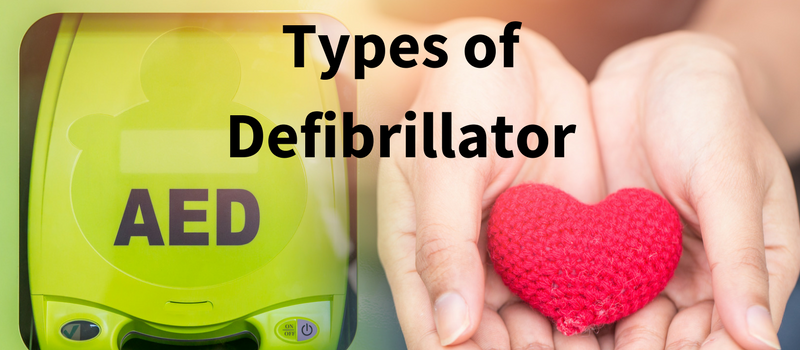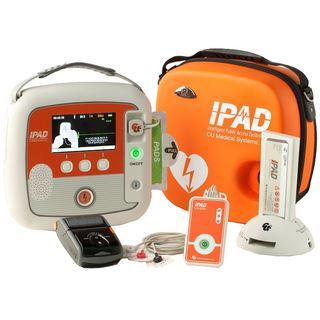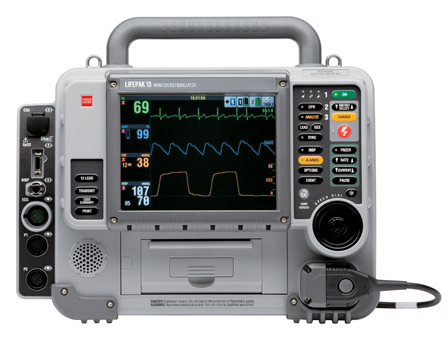What are different types of defibrillator?
A defibrillator has one specific purpose in mind, to save the life of someone who has gone into cardiac arrest. The most common type of defibrillator is the AED, which is an Automated External Defibrillator. This type of defibrillator is a modern, portable defibrillator that is found in many public buildings and workplaces.
The AED comes in two forms, semi-automatic and automatic. Semi-automatic AEDs will detect the rhythm of the heart and tell you when to shock the person in cardiac arrest. The shock is administered by a button on the defibrillator itself. An automatic defibrillator will do everything itself.
Which is better is down to preference, some will prefer the automatic handling everything itself and them not having to worry about delivering the shock at the right time. Others will prefer the semi-automatic as it gives the user more control.
No matter what defibrillator you choose, it is important that you know how to use it. The current AEDs on the market all have a variety of different features designed to make it easier to use, and, of course, increase the chances of survival.
Defibrillators do come in at different price ranges too, and there are differences to reflect the prices. These differences vary from one to the other. For example, take two defibrillators from the same manufacturer.
|
| IPAD SP2 AED Ultimate Package |
| 10 second shock time | Fully automatic with manual override |
| Audio, video and CPR prompts | Colour screen which shows electrocardiogram |
| Information button | Voice prompts |
| Internal Memory that can save data for up to 5 events at 5 minutes each | Multi data recording – 3 events at 17 hours each |
| 1 set of pads | Easy data transfer via SD card |
| 5 year warranty | Free data analysis software |
| Rechargeable battery | 1 set of pads for both adults and children |
| Ambient noise detector | |
| Pre-connected ‘smart’ electrodes | |
| Rechargeable battery x2 | |
| Waterjet proof to IP5S | |
| Comes with battery dock and Bluetooth printer |
The factor that also separates the two AEDs is price. The IPAD Saver is £832.80 after tax and the SP2 AED costs £3,120 including VAT. The differences with what the two defibrillators can do is what makes the vast price difference. It’s also the difference in intended user. The IPAD Saver is intended to be able to be used by anyone, regardless of first aid ability.
The SP2, on the other hand, with its wider feature set is intended for those with experience and places where is more risk of cardiac arrest.
From these two AEDs going up all of the way to the top of the price range and you come to the Physical Control LIFEPAK 15 defibrillator. This is what is called a manual defibrillator, a more traditional type of defibrillator that is more common in medical facilities.
This defibrillator isn’t just a defibrillator, it is a high-end monitor unit as well, intended for medical professionals. This unit can monitor the vital signs of a patient and uses a metronome to guide CPR compressions. It is packed with many other features that are useful to medics and it should, as it doesn’t come cheap. If you want the best, most advanced defibrillator on the market then it will cost you £18,942 after tax.
To get the best defibrillator for your business, you have to assess the requirements of your business and staff. Businesses with a smaller office space will only need one defibrillator that is within easy reach should it be required. For bigger businesses with multiple offices, it becomes a case of considering having more than one defibrillator in order to cover all of the work areas if someone does have a Sudden Cardiac Arrest.
Another thing to consider is the level of understanding your staff have of using a defibrillator, the chances are that the majority of your staff will have never used one before. No training is required to use a defibrillator and the modern AEDs of today will communicate the process, but in a high-pressure situation that might not be enough. Training is available in a package such as the Lifeline AED training defibrillator. This will allow your staff e to get the training needed to effectively use a defibrillator on site.




